Blog
Jakarta: Smart city of the future?
Posted 19th October 2020
Introduction
Introduction
Jakarta in Indonesia recently dropped 13 places to 94th in the Global Smart Cities Index published on 17th September 2020. Public perception regarding poor air quality, traffic congestion and a continuous increase in Covid-19 infections were to blame.[1] These recent developments along with many climate and water related challenges demonstrate how urgently the city needs to rethink its vision for the future.
As one of the fastest sinking cities in the world, the Jakarta City Government needs to prioritise and develop strategies to mitigate the frequency and intensity of urban flooding and coastal erosion. Displacement of people, loss of property and livelihoods are just a few examples of problems exacerbated by rapid urbanization, unregulated and excessive extraction of groundwater, deforestation, and the rise of sea levels. These issues could be partly avoided through a multitude of solutions and multidisciplinary collaborative approaches. IBC have put together some of our thoughts on what these solutions and approaches may look like.
Eight methods to future proof Jakarta
No. 1 Be more smart
Building efficient and interconnected hubs of networks and services using advanced information and communication technologies (ICT) is one aspect of how a smart mega-city could be beneficial to businesses and residents in Jakarta. Indeed, it could be argued that the longer the Covid-19 pandemic continues, the more likely it is that our working lives are permanently transformed to more sustainable models.
Smart city concepts, however, go well beyond ICT and also incorporated:
- smart architectural design using latest sustainable building materials;
- increasing climate resilient buildings and green infrastructure;
- boosting clean energy micro grids;
- improving energy efficiency (district cooling systems, lighting); and
- clean urban transportation networks (hydrogen energy or electric buses).
More importantly in the case of Jakarta’s sinking city problem, upgrading its water supply network, smarter harvesting of rainwater, and building up well-regulated waste management systems are key factors to mitigating the issue.[2]
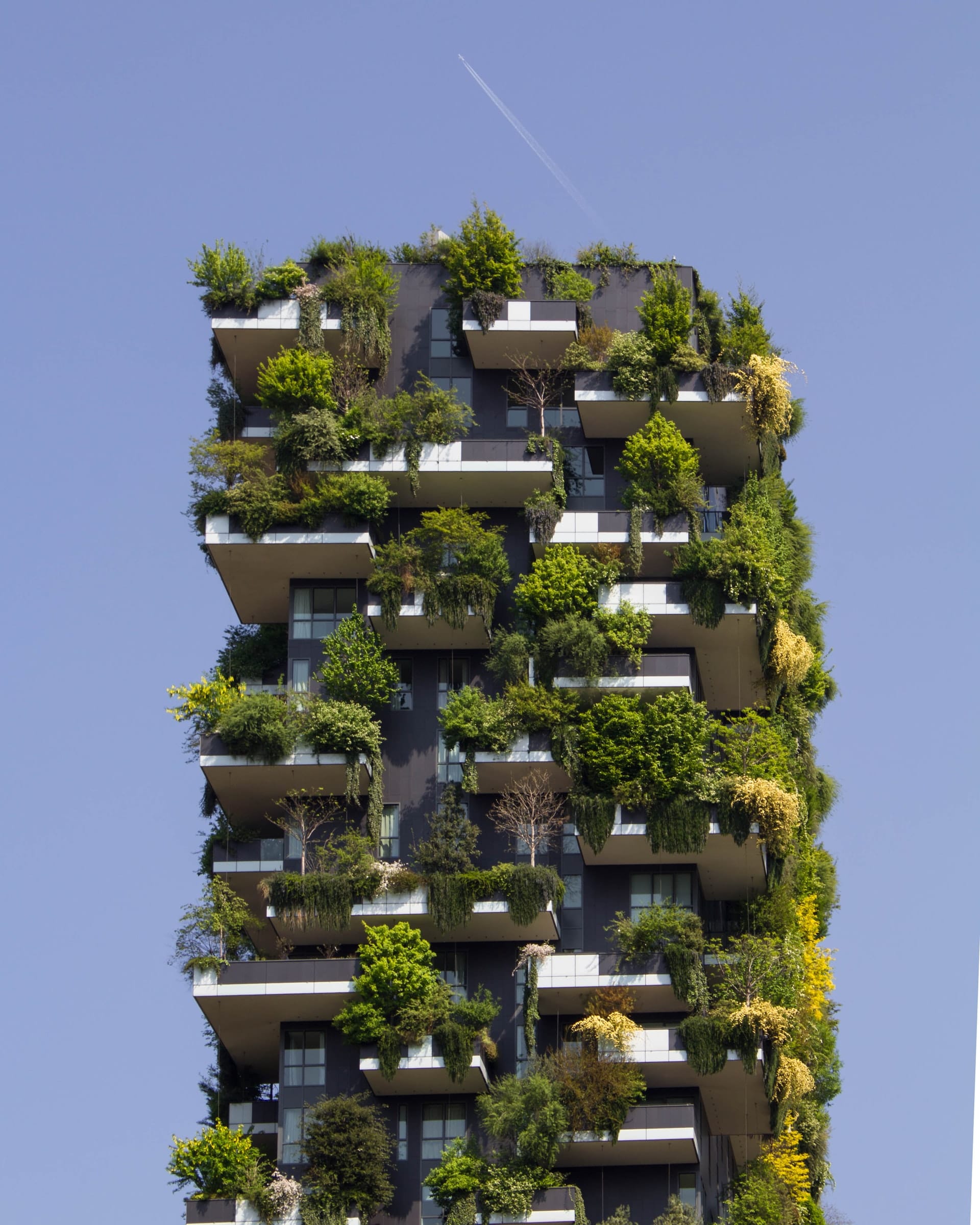
Figure 1: Bosco Verticale, Milan, Italy. Photo by Victor Garcia on Unsplash
No. 2 Strengthen coastlines – Nature-based Solutions
In order to protect Jakarta from tidal inundation, coastal areas need to be strengthened and made resilient to imminent sea level rise and cyclonic weather events causing storm surges. One way to achieve this is the rehabilitation of mangrove forests planted on a large scale. Mangrove ecosystems not only provide coastal protection but are also known to manage and increase water quality. They are beneficial to biodiversity including nesting and breeding habitats for fish, shellfish, migratory birds, sea turtles, and many other species. Healthy mangrove forests improve the livelihoods of fishing and farming communities; around 80% of the global fish stocks rely on them.[3] In addition, mangroves are areas rich in nutrients and usually form part of larger wetland systems, making them attractive for agriculture.[4] One beneficial economic activity specific to Indonesia is the use of mangroves to support the batik industry where fruit waste from mangroves are used as a natural dye to produce eco-friendly batik designs.[5]
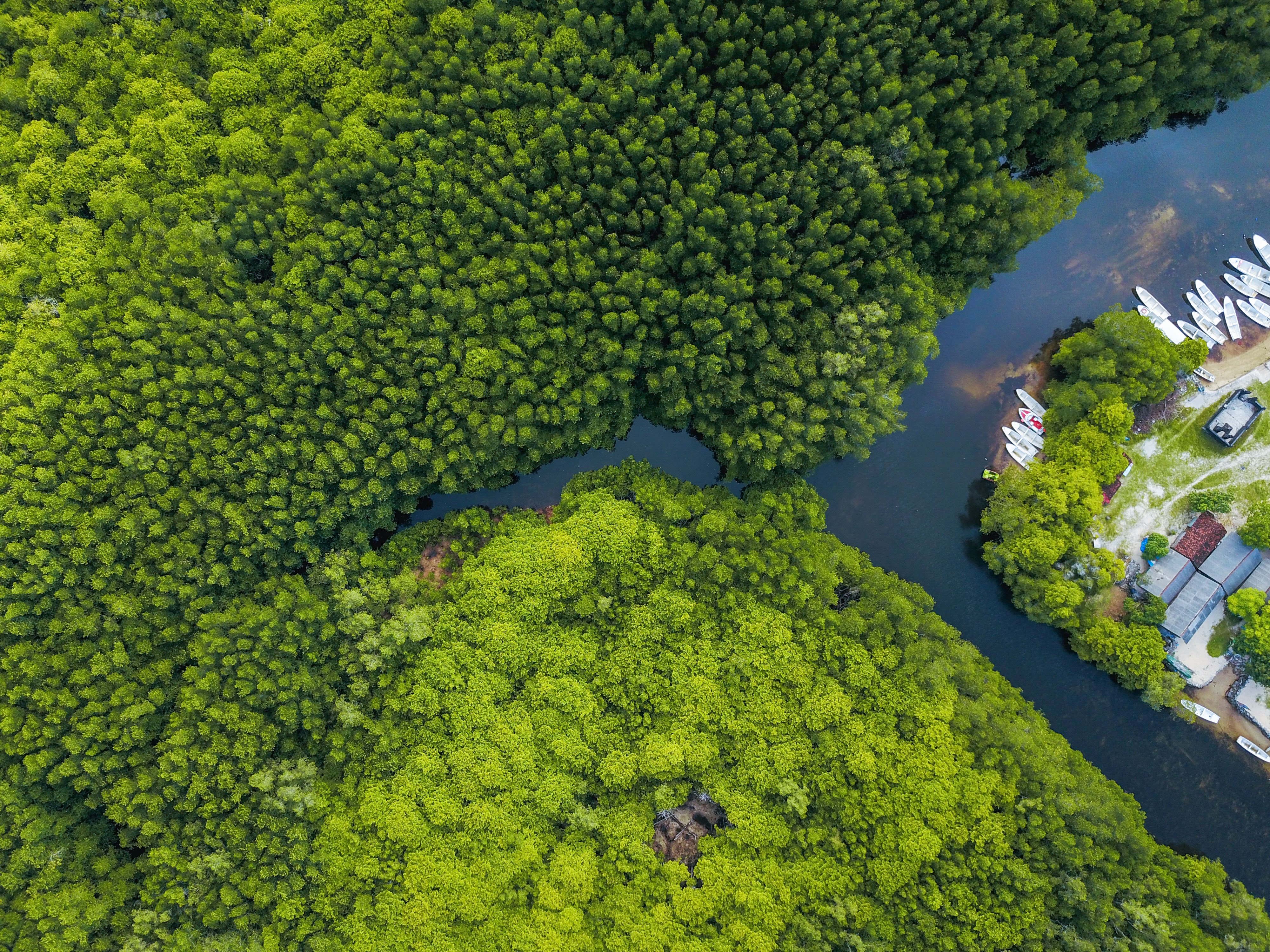
Figure 2: Mangrove forest on Nusa Lembongan, Indonesia. Photo by Joel Vodell on Unsplash
No. 3. Moving better
Like many cities, Jakarta suffers from bad traffic with primary means of transportation via mopeds, motorcycles and cars.
The city has attempted to tackle these with recent improvements, for example, an alternate number plate system[6], increased cycle network, cycle hire and improved pavements. However, this hasn’t really solved the issue.
Greater use of Artificial Intelligence (AI) and mobile application technology could play an important role in terms of smart traffic management, calculating more efficient logistical structures and supply chain routes and adapting to traffic demands. AI could maximize efficiencies in areas such as moped and car taxi services through analysis of customer behavioural patterns predicting when and where they are likely to go shopping, attend meetings, pick up children from school. Put simply, if taxi companies engaged their AI to predict customers’ movements, algorithms could feed this information to its drivers and strategically place them in close vicinity at the right time. Furthermore, this could lead to fuel and cost efficiencies by factoring in where their drivers live and where their closest customer base is likely to appear on the day. This, in theory, has both social and environmental benefits.[7]
Jakarta could also benefit from complementing existing conventional freight and logistics that deliver goods by van, lorries, and trucks, and utilize pedal assisted electric freight bikes for localized urban coverage.[8] The city already has an existing culture of “traveling salesmen” known as penjual/pedagang keliling and vendors that sell beverages and snacks travelling on bikes (known as Starling, an abbreviation of Starbuck keliling “traveling Starbucks”[9]), which is an example of how a larger freight-on-bike infrastructure could easily be introduced.
Another crucial focus should be placed on green hydrogen and electric buses, as well as, electric vehicles including mopeds. The important point for buses is that a network already exists in the form of roads. There is no need to focus on expensive infrastructure like new urban train lines and overhead bus networks. Overhead structures could instead be converted into urban rail network. In addition, more buses on roads should reduce other traffic, especially if they cover wider areas and are affordable for people of all income levels. However, for this to become a truly sustainable mode of transportation, the sources of electricity and hydrogen must be of renewable nature (see point 4 below).
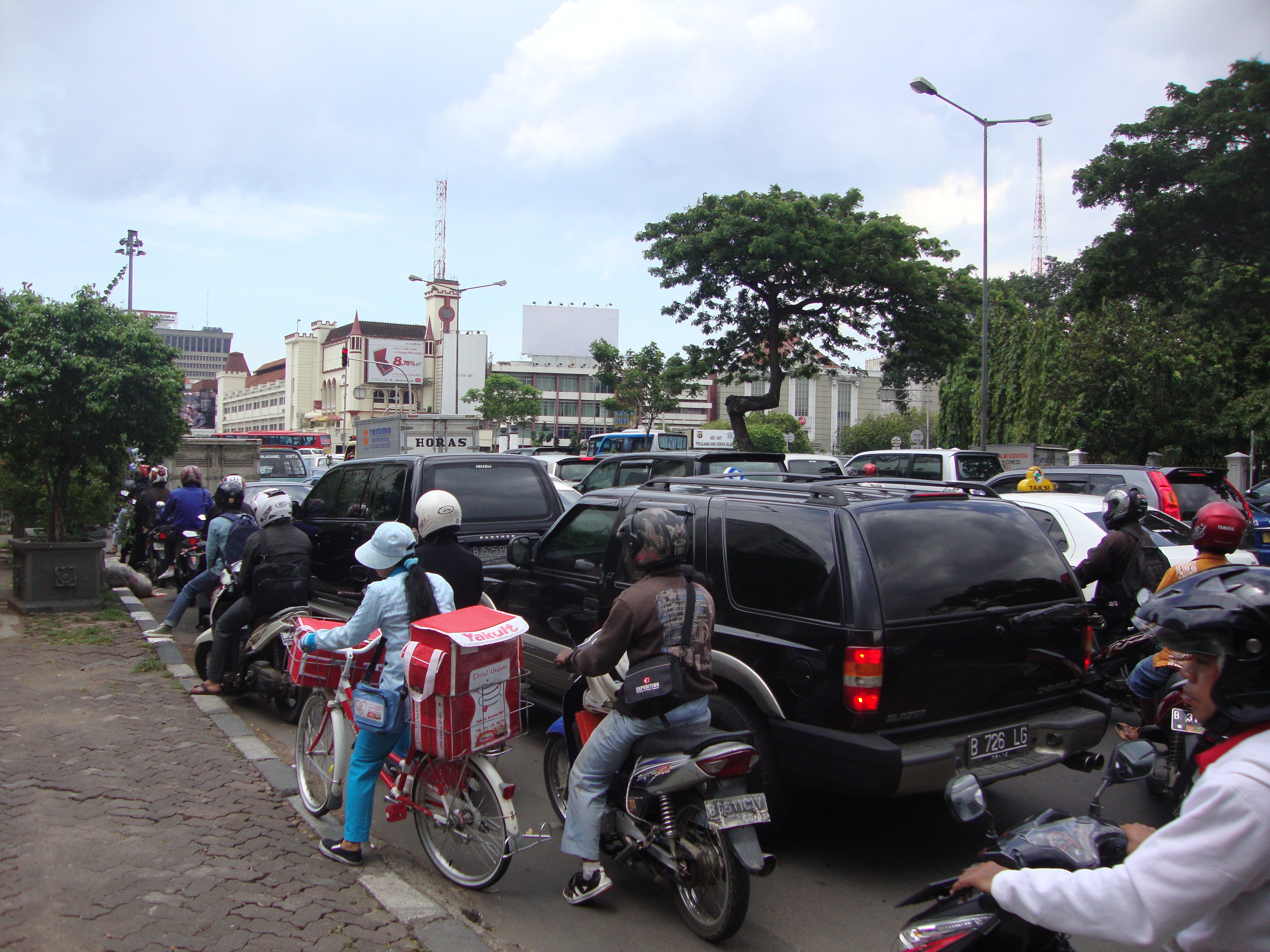
Figure 3: “Jakarta Traffic”. Photo by VasenkaPhotography on Flickr via CC Search. This image is licensed under CC BY 2.0.
No. 4 Energy transition
A mega-city like Jakarta has high energy demands, which are currently met by coal, oil, and gas. Diversifying the energy mix to a) include geothermal, solar, wind, and hydrogen power, and b) phase out fossil fuels is imperative in order to achieve healthy levels of air quality and beyond that mitigate and reverse the adverse effects of global warming related disasters. Indeed, Indonesia has great advantages for achieving a diverse energy generation network:
- its many volcanoes provide potential sources for geothermal energy;
- as a tropical country, there is great solar potential;
- hydrogen power is increasingly promoted in the Southeast Asian region[10], and
- there are now more innovative designs of smaller vertical wind turbines, as well as, wind funnels that could be incorporated into urban designs either in form of art installations[11] or installed onto existing buildings i.e. building-integrated wind turbines[12].
Urban micro-smart energy grids may also be suitable for Jakarta in the future, for example exchange of solar and wind energy between neighborhoods. However, at present not all households and residential districts may be able to afford the costs. Poorer districts of Jakarta called Kampung’s could be left out as installing large solar panel arrays on make-shift housing would be difficult.
No.5 Be more green
Jakarta could rapidly ‘green-up’ through more Green Infrastructure (GI), be it through an increase of green spaces such as parks and green corridors, planting a variety of trees and shrub species in all public spaces (road sides, bridges, train stations, etc.)[13], and/or through the installation of suitable plants, mosses, grasses, shrubs, and smaller trees on the side of buildings and rooftops adept to the local climate, heat, and amounts of direct sunlight.
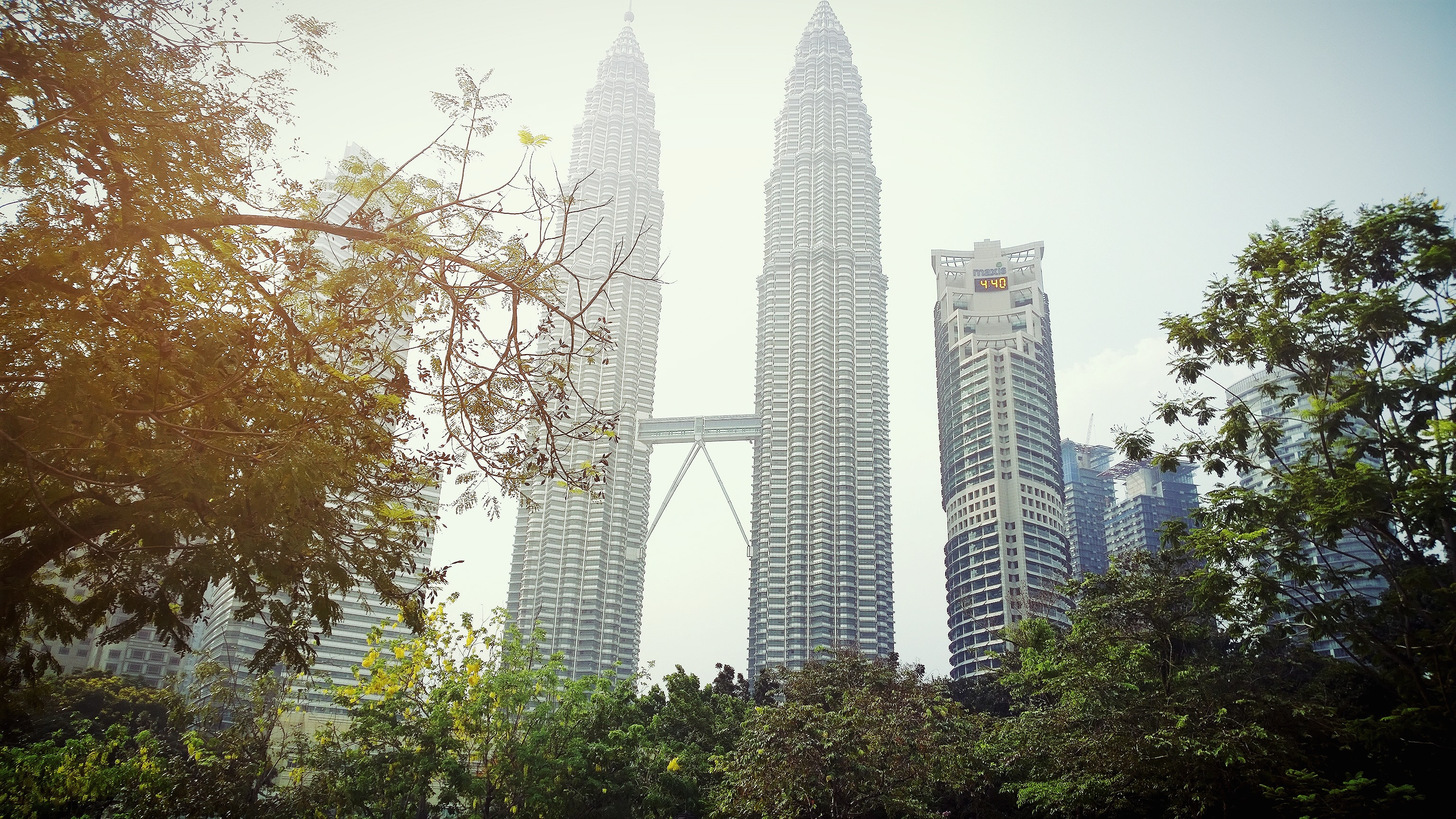
Figure 4: Greenspace outside the Petronas Towers at Kuala Lumpur City Centre, Kuala Lumpur, Federal Territory of Kuala Lumpur, Malaysia. Photo by Oliver Twist on Unsplash
Furthermore, GI promotes multifunctionality by which the same space or piece of land can offer a multitude of benefits such as improved air quality, increases in mental well-being, better temperature regulation, water absorption during wet season, added food security e.g. through the planting of publicly accessible fruit trees, and an increase in urban biodiversity.
Multifunctionality of spaces in GI can include wildlife overpasses, clean rivers and streams, green roofing and green walls, as well as, biodiversity-rich business parks, multifunctional farming, beekeeping, and wildflower verges, recreational spaces and more.[14] As such, these could provide healthy urban ecosystems.
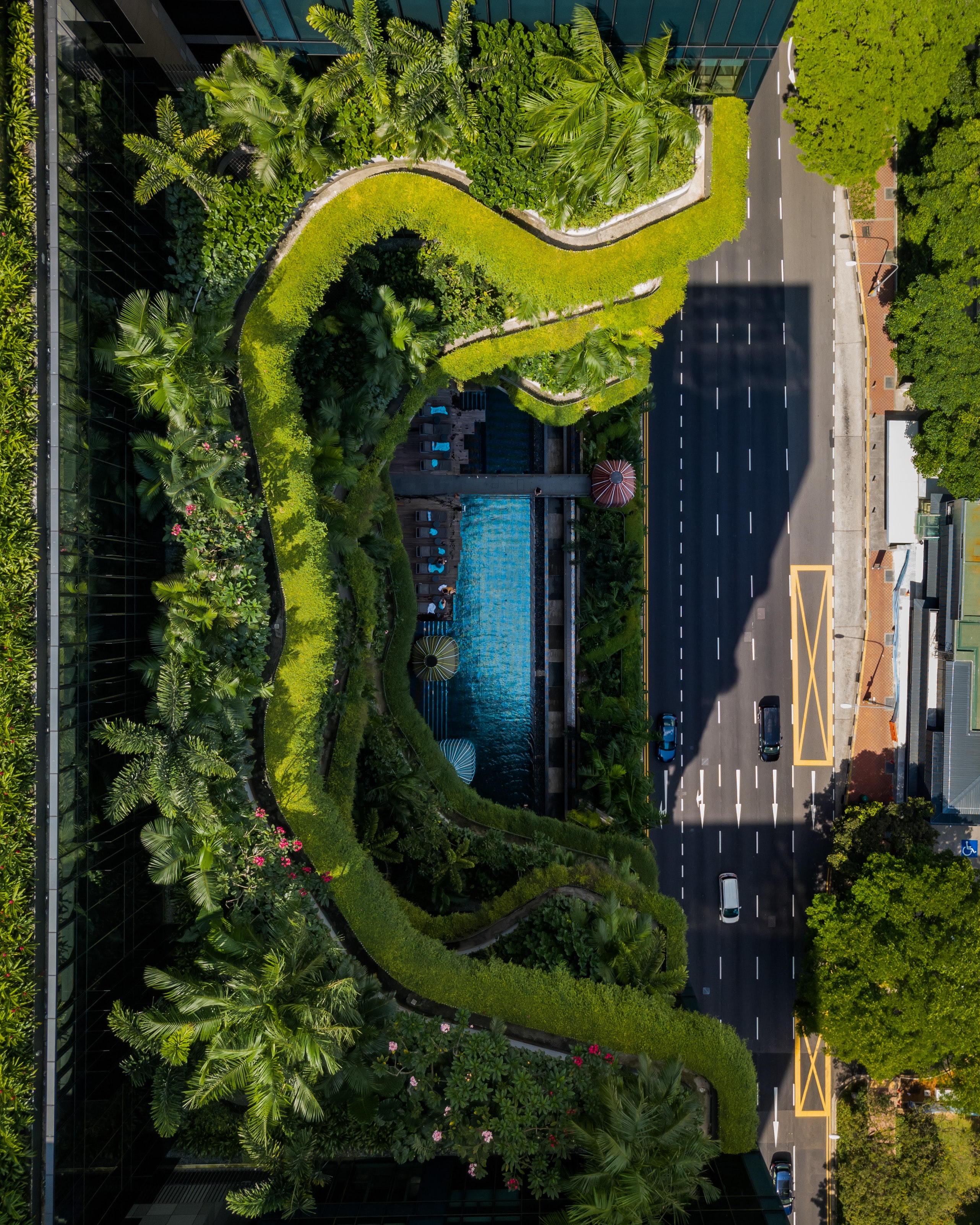
Figure 5: Eco Building with garden architecture at PARKROYAL on Beach Road. Photo by Nazarizal Mohammad on Unsplash.
GI may also have the benefit of mitigating noise in urban areas by around 50% through the planting of so-called “noise buffers” usually in the form of trees, shrubs and hedges. For an effective noise reduction, it is important to design the planting areas carefully with the help of noise and tree/plant specialists.[15]
No. 6 Flexible, sustainable, and affordable housing
As the 2019-2020 wet season has shown, the communities most vulnerable to flooding have been those in deprived and/or coastal areas, as well as, along rivers and waterways, of which there are many in Jakarta. Socio-economic disparities have resulted in development of illegal housing built on the edges of riverbanks and waterways hindering the free flow and water discharge of the rivers.[16]
As flash floods become increasingly likely, it is imperative to come up with affordable, sustainable, and flexible solutions. Some house building companies specialize in these aspects in the form of foldable, adaptable, flexible, and/or modular housing solutions from basic[17] folding pre-fab containers to more sophisticated buildings including appliances, quickly deployed and set up in the event of disaster and adaptable to the needs during such times.[18]
Here are seven examples for innovative foldable housing solutions:
No. 7 Floating districts and cities: Future-proofing coastal communities
Flexible housing solutions need to be built in an environment that is more flood-proof, and with densely populated coastal areas there is certainly a shortage in estate that poorer communities can afford. Therefore, rebuilding communities and housing on floating platforms that are both interconnected and attached to the mainland could provide a more permanent, as well as, an immediate solution without displacing existing communities (especially fishing villages) and endangering their incomes and livelihoods.
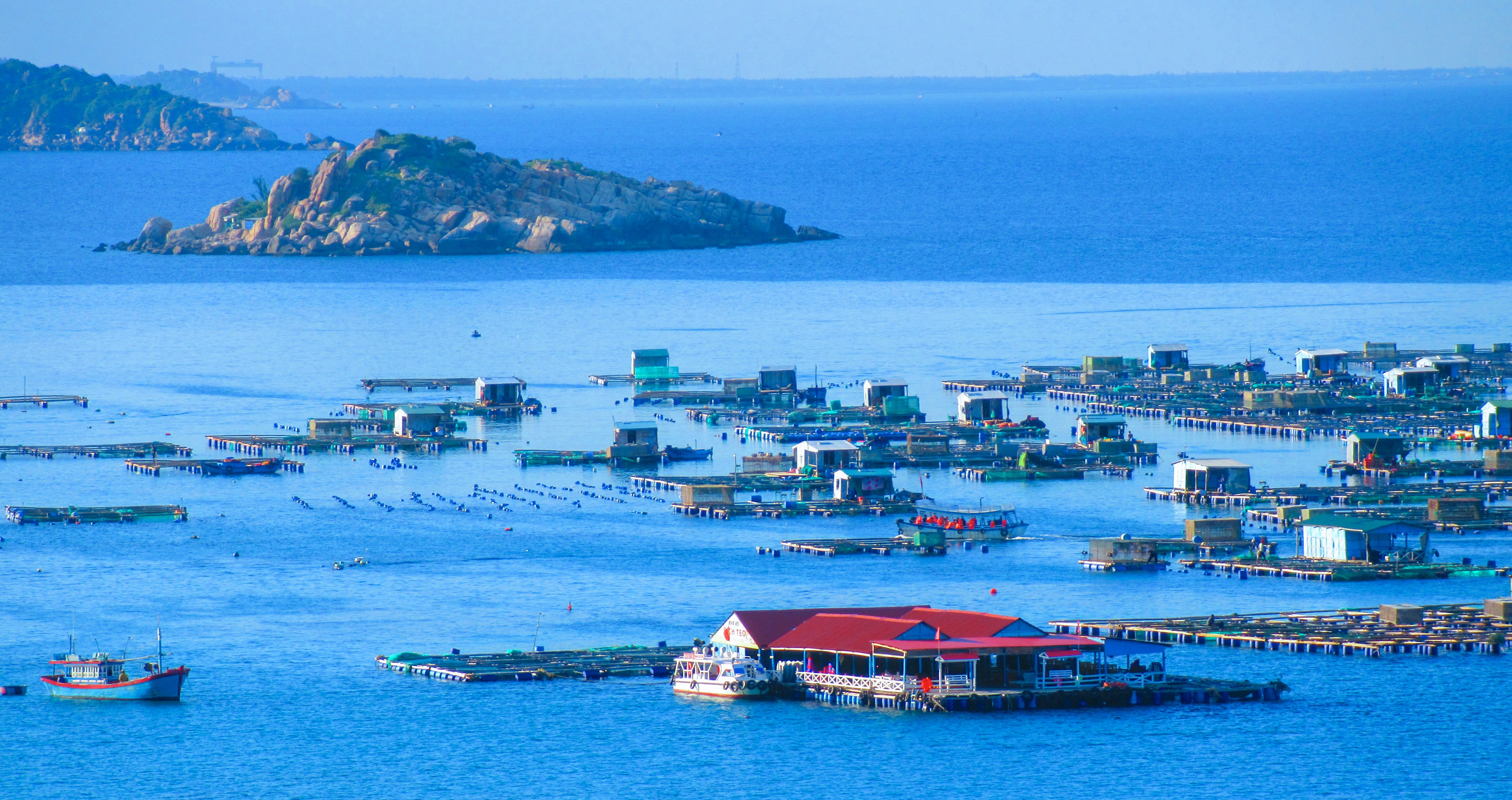
Figure 6: Floating village in Vinh Hy Bay, Vietnam. Photo by Karoly Buzas on Unsplash
On a more long-term timescale, Jakarta would benefit from becoming one of the pilot projects for so-called ‘Floating Cities’. Although a seemingly futuristic approach, floating communities and even floating cities have been conceptualized by urban designers and architects such as Bjarke Ingels. If designed and executed in a holistically sustainable manner, such cities could be fairly self-sustained, provide energy and food security, as well as, safety from flooding.[19] The risks from tsunami’s would have to be considered carefully in terms of location, and therefore may suit more sheltered positions or where land has been lost to the sea due to sea level rise.
No. 8 Fresh Water Regulation
Another major contributor to Jakarta’s problems of flooding is subsidence, which has been attributed to abstraction of water due to a lack of formally established and regulated fresh water supplies in (mostly but not exclusively economically deprived[20]) parts of the city. In fact, only a quarter of the city’s residents have access to piped water. As such, extracting ground water is the only means of access to fresh water for the rest of the population.[21]
Jakarta’s authorities could address this by adopting the principles of Inclusive Development as defined within the 17 Sustainable Development Goals (SDGs) including Goal 6 Clean Water and Sanitation for All[22]. The aim of these principles is to reduce the potential exposure to disaster events such as flash floods, as well as, the risks of civil unrest (often as a result of natural disasters), which in turn amplify existential vulnerability. In the case of Jakarta, SDG Goal 6 is crucial and needs to be adopted into local legislation and policies in order to eliminate a multitude of risks including the continuous depletion of groundwater aquifers, the sinking of the city, flash floods and resulting displacement, and a general risk to people’s health through water contamination and water scarcity.[23] In practical terms, this would include putting in place a regulatory body that oversees and manages necessary investments in extended freshwater and sewage networks that not only connects up all households across the city but also manages reliable and fair distribution through the maintenance of pipework. This effort requires streamlined regulatory laws, policies, and processes throughout Jakarta in alignment with aforementioned SDG Goal.
An achievable future
Although the approaches outlined above seem an overwhelming and daunting task, it is not an impossible goal. Many of the resources in the form of expertise, activists, educators, volunteers, and local stakeholder representation are already present. However, like with the rest of the world, these groups often seem to act individually without much cross-disciplinary interaction. Increased interaction between groups and combining efforts and resources (both human and monetary) could bring about more rapid and constant improvements. Furthermore, increased regional action and cooperation within ASEAN regarding such matters is imperative for the authorities of Indonesia to set in motion more rapid progress.
It should be noted that many cities around the world including the Southeast Asia region are facing the same or at least very similar climate related threats of air pollution, floods, and sea-level rise. As such, a lot of sustainable innovation in the areas outlined above is already taking place in the region with many cities having already introduced these ideas. Some of them are already underway in Jakarta, however, the city needs to place greater emphasis on well-coordinated, multi-disciplinary approaches, and due to the risks that the city is facing the authorities need to implement these measures rapidly.
About the Author: Tanja Rogers BA (Hons), LLM. Tanja is Company Secretary at International Biodiversity Consultants Ltd and is currently residing in Jakarta, Indonesia (30 August 2020).
About International Biodiversity Consultants Ltd: International Biodiversity Consultants Ltd was formed in 2019 and is focused on global solutions for nature. Find out more here or link up with our social media: linktr.ee/ibioconsultant1
References:
[1] See: Andriyanto, H., (2020). Jakarta Drops to 94th in Global Smart City Index. The Jakarta Globe [online]. 17 September. [Viewed 6 October 2020, 11:41]. Available from:
[2] For an overview on smart cities, see: https://ec.europa.eu/info/eu-regional-and-urban-development/topics/cities-and-urban-development/city-initiatives/smart-cities_en
[3] For a more detailed overview of benefits see: https://ecoviva.org/7-reasons-mangroves-matter/
[4] See: https://mangroves.elaw.org/node/23#:~:text=The%20close%20proximity%20of%20mangroves,are%20prized%20for%20salt%20production.
[5] See: https://www.carbonethics.org/save-batik-mangrove
[6] The alternate number system is also known as the “odd-even traffic policy”. It restricts the number of cars travelling (e.g. on Jalan Sudirman) by allowing cars with even digits on their number plates to use the designated roads one day and those with uneven digits the next day. See: Sidiq, F., (2018). What you need to know about Jakarta’s odd-even traffic policy. The Jakarta Post [online]. 24 April. [Viewed 6 October 2020, 12:39]. Available from:
[7] For an overview on the topic of AI application in transportation please see: Abduljabbar, R., et. al., (2019). Applications of Artificial Intelligence in Transport: An Overview. Sustainability [online]. 11(1), 1-24.[ Viewed on 12 October 2020]. Available from: doi: 10.3390/su11010189.
[8] See: Sturia, A., (2019). New York City announces new cargo bike program to ease traffic congestion. CNN [online]. 6 December. [Viewed 16 October 2020, 12:31]. Available from: https://edition.cnn.com/2019/12/05/us/new-york-city-announces-new-cargo-e-bike-program-trnd/index.html
[9] See: Baskoro, Y., (2019). Starling: Jakarta’s Starbucks-on-Bikes. Jakarta Globe [online]. 17 October. [Viewed on 16 October 2020, 13:46]. Availabe from: https://jakartaglobe.id/vision/starling-jakartas-starbucksonbikes/
[10] See: Li, Y., (2019). Hydrogen as a clean fuel for transportation. The Asean Post [online]. 7 October. [Viewed 12 October 2020, 16:43]. Available from: https://theaseanpost.com/article/hydrogen-clean-fuel-transportation and Phoumin, H., (2020). Hydrogen: A game-changer for ASEAN. Bangkok Post [online]. 7 October. [Viewed 12 October 2020, 16:53]. Available from: https://www.bangkokpost.com/opinion/opinion/1940744/hydrogen-a-game-changer-for-asean .
[11] See: Gillespie, A., (2016). These Creative Wind Turbines Will Have You Rethinking What You Know About Wind Power. Smithsonian Magazine [online]. 12 January 2016. [Viewed 12 October 2020, 17:10]. Available from: https://www.smithsonianmag.com/innovation/these-creative-wind-turbines-will-have-you-rethinking-what-you-know-about-wind-power-180957767/
[12] In fact some trial projects have been conducted a few years back in Central Java. See: Sari, D. P., et. al., (2014). A Technical Review of Building Integrated Wind Turbine System and a Sample Simulation Model in Central Java, Indonesia. Energy Procedia [online]. 47, 29-36. [Viewed on 12 October 2020]. Available from: doi: 10.1016/j.egypro.2014.01.193.
[13] The emphasis should be on a variety of plant species, since it is known that monoculture is less effective in absorbing carbon emissions. See e.g. https://www.carbonbrief.org/planting-a-mix-of-tree-species-could-double-forest-carbon-storage and Liu, C L. C., et. al., (2018). Mixed-species versus monocultures in plantation forestry: Development, benefits, ecosystem services and perspectives for the future. Global Ecology and Conservation [online]. 15, 1-13. [Viewed 25 September 2020]. Available from: doi: 10.1016/j.gecco.2018.e00419.
[14] See: https://www.eea.europa.eu/themes/sustainability-transi tions/urban-environment/urban-green-infrastructure/what-is-green-infrastructure
[15] See: https://www.forestresearch.gov.uk/tools-and-resources/urban-regeneration-and-greenspace-partnership/greenspace-in-practice/benefits-of-greenspace/noise-abatement/
[16] See: https://storymaps.arcgis.com/stories/df001d7f9e514a8783cffa623a94e96d
[17] See for example https://www.linkedin.com/posts/ajjames_quick-and-simple-where-could-you-use-this-ugcPost-6712466678220902400-qDc9
[18] See for example: https://www.boxabl.com/disaster, https://madihome.com/, and https://www.tenfoldengineering.com/.
[19] See e.g.: https://www.ted.com/talks/bjarke_ingels_floating_cities_the_lego_house_and_other_architectural_forms_of_the_future/transcript?language=en
[20] According to Kooy, M., et. al. (2018), the lack of connections to centralised water networks are not exclusive to poor communities, but also rich households are still not using the city’s piped water supply. By contrast, the largest percentage of those connected were composed of lower middle class and middle class consumers. See: Kooy, M., et. al., (2018). Inclusive development of urban water services in Jakarta: The role of groundwater. Habitat International [online]. 73, 109-118. [Viewed 30 September 2020]. Available from: doi: 10.1016/j.habitatint.2016.10.006.
[21] See: https://www.businessinsider.com/indonesia-jakarta-sinking-flooding-2019-5?r=US&IR=T#only-a-quarter-of-jakartas-residents-have-access-to-piped-water-which-means-many-of-them-have-to-drill-for-it-underground-5
[22] See: https://www.undp.org/content/undp/en/home/sustainable-development-goals/goal-6-clean-water-and-sanitation.html
[23] For more details on SDGs and inclusive development see: Gupta, J., (2016). Sustainable development goals and inclusive development. International Environmrntal Agreements: Politics, Law and Economics [online]. 16, 433-448. [Viewed on 1 October 2020]. Available from: doi: 10.1007/s10784-016-9323-z.